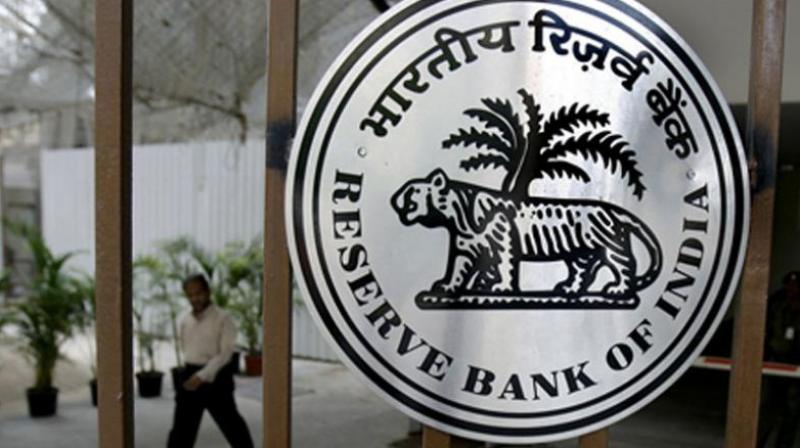RBI must set a new path for India's troubled banks
Forty-nine years after Indira Gandhi nationalised the banks, life for a banker, more so in public sector banks, appears grim.

Forty-nine years after Indira Gandhi nationalised the banks, life for a banker, more so in public sector banks, appears grim. A Union minister’s recent missive to the district collector of Chandrapur in Maharashtra to withhold the salaries of bankers who failed to meet targets under the Mudra Yojana recalls similar warnings, decades ago, by then minister of state for finance Janardhana Poojary in the days of “loan melas” of punishments for those who didn’t meet IRDP targets. In 49 years, the politics around economics hasn’t changed.
One should recall that bank nationalisation, dubbed as a major reform, was a rallying point for a lot of agitations over the banks’ reach to the poor, with sectors like agriculture and small industries totally neglected till then. Over 50 committees worked hard at the Reserve Bank and the Central government to design the “Lead Bank Scheme”, to ensure the spread of branches first, and later to monitor targets under the priority sectors.
From one-third of aggregate lending initially, the share of the designated priority sectors was later scaled up to 40-45 per cent, with the bulk going to agriculture. More and more loan write-offs followed, which went on to dilute the lending discipline of the banks. The banks had little choice but the concede the growing demands for such write-offs due to political reasons.
Subsequently, the Banking Reforms Committee chaired by M. Narasimham called for ushering in competition in banks by allowing private banks and creating responsible large spaces for PSBs via consolidation. This was also termed a major reform, though its key recommendation to wind up the department of banking found no takers.
Economists, however, regard this as the watershed of banking reforms - from when PSBs shut many of their “unviable rural branches”. Let us see the performance of the banks since 2001.
The RBI’s Quarterly Bulletin data shows while the total credit-deposit ratio at the end of December 2001 was 57 per cent, it moved to 77 per cent in 2012 but declined to 75 per cent in 2017. Metro centres constituting 8.88 per cent of branches in 2001 moved up to 17.6 per cent in 2017. During this period, metro deposits moved up from 42 per cent to 51.5 per cent, while credit moved up from 60 per cent to 63.8 per cent - constituting a 93 per cent credit-deposit ratio. The top 100 centres had a credit-deposit ratio of near 90 per cent at the end of December 2017. Urban, semi-urban and rural centres had a credit-deposit ratio 53, 57 and 59 per cent respectively in 2017, compared to 68, 33 and 41 per cent in 2001.
This performance of banks whittles down at once, in the context of the ever-rising non-performing assets of the banking sector as a whole, with a significant contribution from nationalised banks, touching over Rs 10 trillion, despite the legal facilitation for recovery offered through the Debt Recovery Tribunals, the Sarfaesi Act, and other processes, as well as regular periodical reviews by the finance ministry, which appeared to have no clue on how to contain this malaise.
At the time of nationalisation in 1969, the government’s ownership of banks was to ensure that the poor and the neglected sectors received their due share of credit. The return on investment for the government was more in ensuring that its welfare objective is achieved than actual monetary returns. But when after the liberalisation of the economy in the 1990s, profit maximisation became the major concern, it led to the recommendation by P.J. Nayak that the government reduce its share in banks and allow them to be brought under the Companies Act.
Ensuring the speed of service, using technology, became a priority, replacing the essence of quality and better reach. Banks became the servants of technology. The discretion in loan sanctions moved around templates and unqualified projections followed lack of supervision. The cutting of costs resulted in cutting the supervisory manpower. Dwindling domain knowledge, greed, and a failure of governance pushed under the carpet the frauds and malfeasance in
nationalised banks to paint a picture that it was nationalisation that played the spoilsport.
The question before the nation today is: Do we still need nationalised banks? My answer will be an unqualified “yes”. At the same time, I would argue for a basic change in governance and shutting down of the unprofessional department of banking. The Reserve Bank would do well to appoint a high-level committee to set a new direction for Indian banking, tackling its marred image which is driving away investments even in a growing economy.
The review of non-performing assets began at the wrong end, without tackling the root cause - short-term resources were allowed to be lent for long-term purposes. The institutions meant for infrastructure credit and project lending were wound up. Universal banking was introduced with banks doing more non-banking activities than banking business. The roots of the malaise are so deep that they remind me of Shakespeare’s Macbeth: “Here is the smell of blood still: All the perfumes of Arabia will not sweeten this little hand.”
H11

